How to grow hedge apple trees – the native species with otherworldly fruits
Resilient and reliable, this native tree is an unusual species to grow at the back of the yard
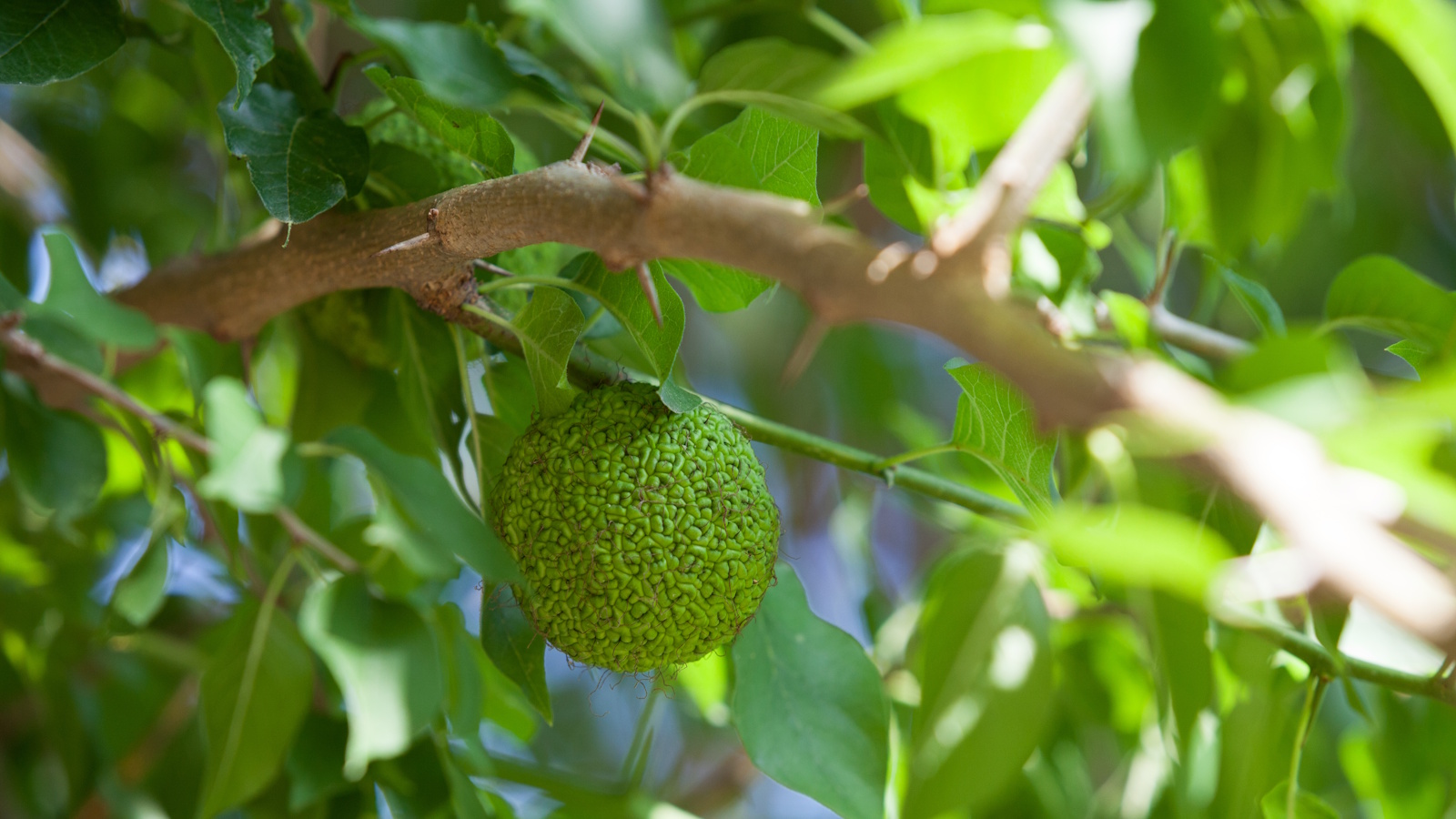

The hedge apple tree, also known as the Osage orange, is a native tree growing in the south of the United States. Native to the Red River of the South basin, it can be found in the wilds of Texas, Oklahoma and Arkansas.
While the strange-looking fruit is not edible, this tree species has a long history of usage by Osage Native Americans, who made use of the strong and durable timber.
Today, the hedge apple tree is grown as a statement tree or as a boundary hedge to enclose backyards. So, if you are seeking native plants for your plot, why not consider growing this unique tree? Here, one plant expert from Wisconsin reveals all you need to know to learn how to grow hedge apple trees.
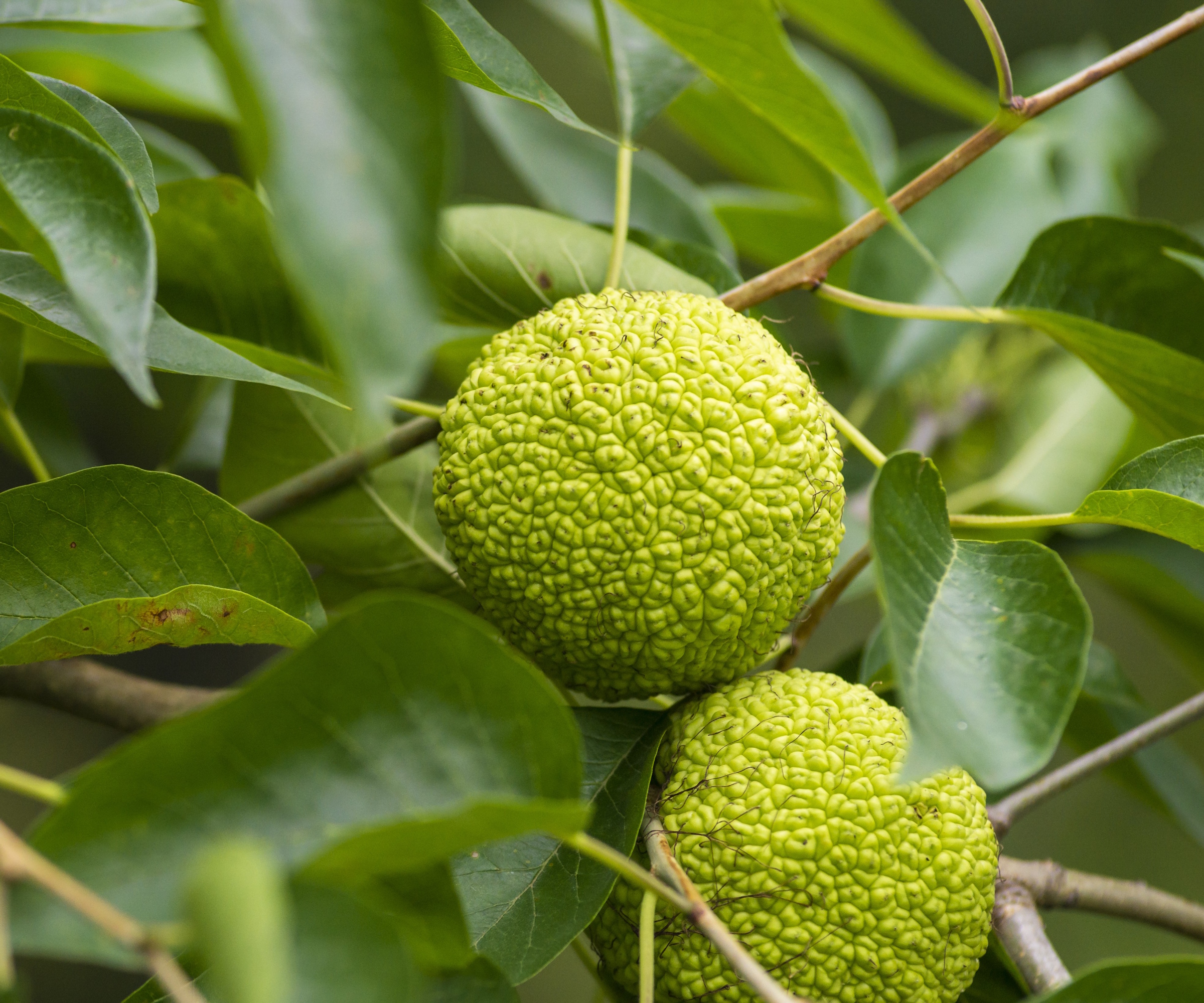
How to grow hedge apple trees
The hedge apple tree, or Maclura pomifera, might not be as well known as other native species but it is no less impressive. This fast-growing tree is a species for all seasons, with odd fruits in summer and brilliant fall colors, as can be seen below. What's more, learning how to grow hedge apple trees is simple, and by following a few simple steps, they will quickly settle in your yard.
Growing habits of hedge apple trees
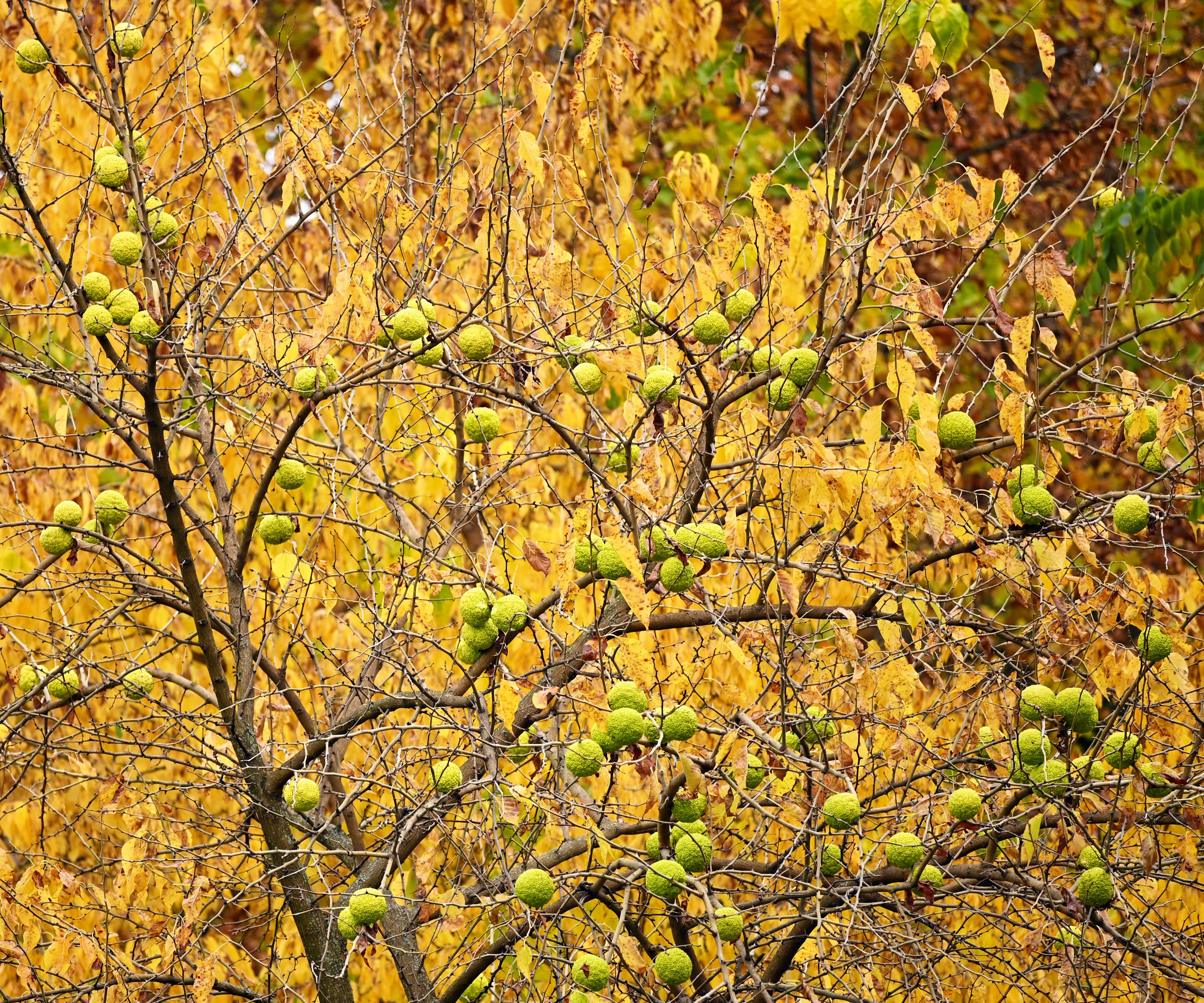
'Hedge apples, also known as Osage orange trees, are unlike any other tree species you have seen before,' says plant expert, Katie Sunderlage, based in Wisconsin.
'They are best suited for large, wildlife gardens in rural settings,' Katie adds, 'ideal if you are interested in learning how to create a native landscape or want to try your hand at wild gardening.
'Due to its large growth habit - reaching upwards of 40 feet - it’s not recommended in a home landscape setting.' Beware the thorns too, which can cause serious damage but prove useful at the boundary of your yard if you are concerned about home security.
'Doing best in US hardiness zone 4 to US hardiness zone 9, you can grow hedge apples from seed or a sapling,' Katie continues. Hedge apple seeds are available from Amazon. Sow seeds indoors under cover, either in a greenhouse or on a windowsill in small pots. Once large enough to handle, usually after a few months, you can plant them outside in the ground.
'The best time to plant a sapling would be early spring when the ground can be cultivated but the sapling is still dormant. Opt for a sunny location with moist, well-drained soil for the best results.'

Operations Manager at Holland Group, managing the customer service department and purchasing. Katie has been in the green industry since 2005 in the Greater Milwaukee area, earning her degree in Horticulture in 2008. She has been able to share her love for plants working in multiple garden centers, in sales positions and most recently in an online retail platform at Holland Group.
Growing advice for hedge apple trees
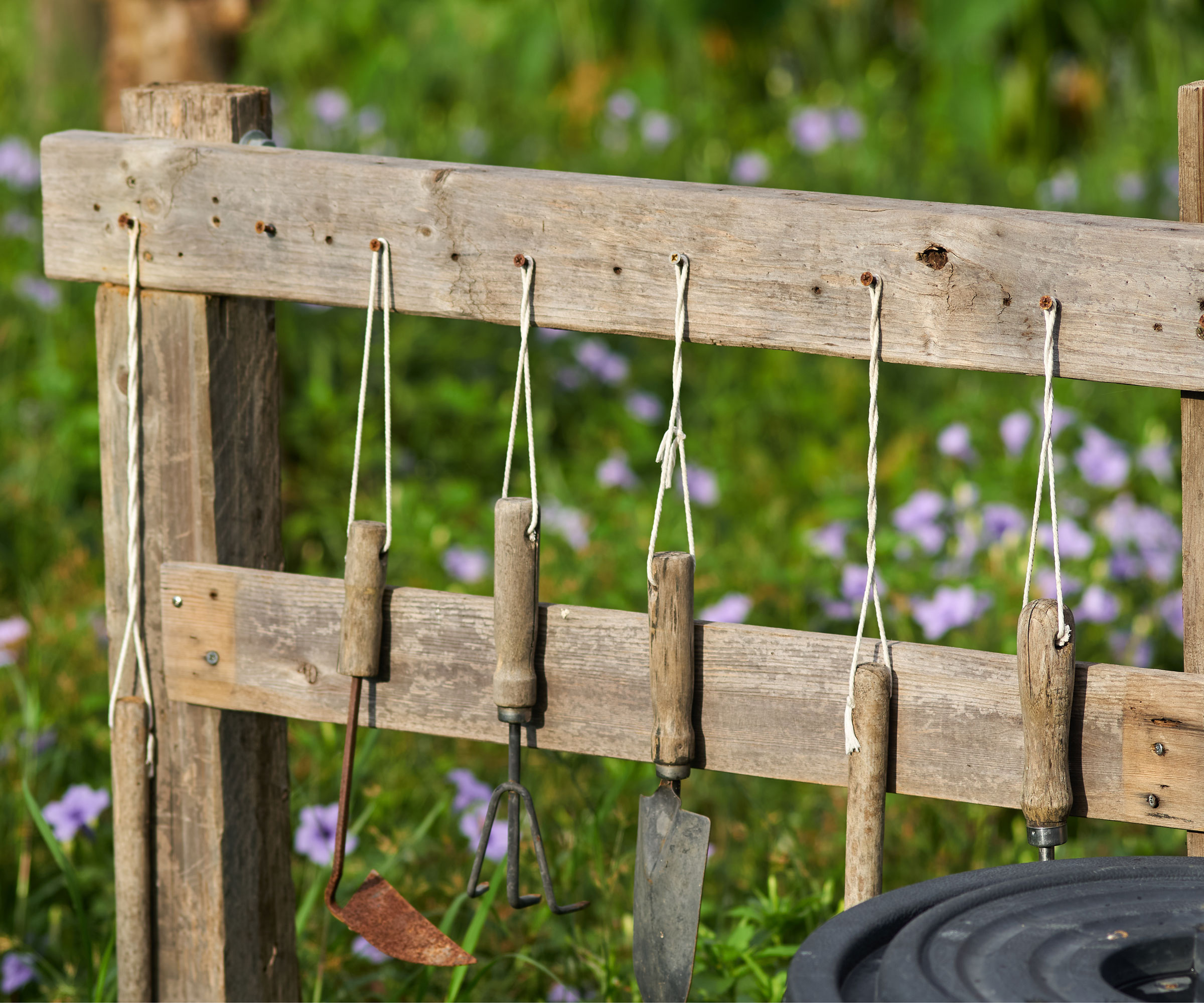
Soil: Hedge apples are resilient and versatile native trees and will grow in a variety of different climates and soil conditions, although it is best to avoid waterlogged soils. 'Applying a layer of mulch can help to regulate moisture in the soil and moderate the temperature too,' Katie says. 'Just be sure to keep a ring around the trunk free of mulch to prevent rotting.' Pine bark mulch is available from Walmart.
Light: Hedge apple trees can be grown in both sunshine and part-shade, although for the best results, you want to plant this species in an open site. In the wild, hedge apple trees will grow in unobstructed open prairies or grasslands, so providing as much light as possible is essential.
Watering: 'During the active growing season, young saplings need watering about every 2 to 3 weeks until established,' Katie says. 'After a year or two, they will prove to be self-sufficient and access the water they need from the soil.'
Fertilizing: 'While they are establishing, it is a good idea to use a well-balanced, all-purpose fertilizer,' Katie says. 'This is best done when the trees are young to help establish a strong root system. However, after a few years of growth, you should not need to feed hedge apple trees.'
Pruning: Without pruning, hedge apple trees can quickly get out of control. If they are growing at the rear of a large or wild backyard, this is not a problem, but in smaller spaces, annual pruning is recommended. If you are growing this species in a hedgerow, maintain a compact and dense habit by pruning out stems as they appear. Felco pruning snips are available from Amazon.
Toxicity: Hedge apple trees are not edible, and the fruits do contain substances that can be toxic if consumed by humans and pets. When handling, wear protective gloves as the sap from the stems and fruits can also cause skin irritation.
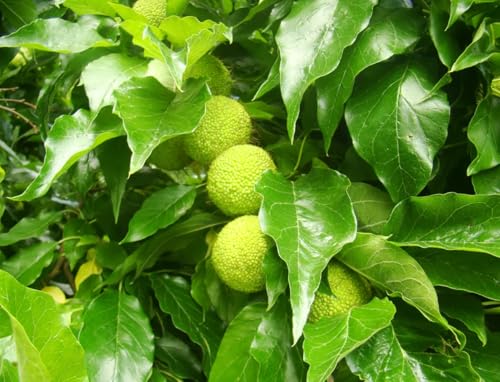
The bare root hedge apple tree will quickly grow in your yard. Plant as soon as it arrived, and give the root plenty of water.
FAQs
Can I grow a hedge apple in a pot?
While you can grow a hedge apple tree in a pot, it is generally not recommended. Not only do these trees want to send out roots deep into the ground, but they also have thorns, so they would not make for an ideal addition to your pot displays. Instead, keep this unusual species in a wild section at the back of your yard.
If the hedge apple tree is not for you, consider a different native tree that is also in the mulberry, or Moraceae plant family. While related to the hedge apple, the native red mulberry, Morus rubra, could not be more different, with edible fruits and thorn-less branches. So, why not learn how to grow a mulberry tree and enjoy delicious and rare fruits every summer?
Sign up to the Homes & Gardens newsletter
Design expertise in your inbox – from inspiring decorating ideas and beautiful celebrity homes to practical gardening advice and shopping round-ups.

Thomas is a Content Editor within the Gardens Team at Homes and Gardens. He has worked as a professional gardener for both public spaces and private estates, specializing in productive gardening, growing food and flowers. Trained in Horticulture at the Garden Museum, he has written on gardening and garden history for various publications, including The English Garden, Gardens Illustrated, Hortus, The London Gardener and Bloom. He has co-authored a Lonely Planet travel book, The Tree Atlas, due out in 2024.
-
 5 key trends from Milan Design Week that are going to change the design direction of 2025
5 key trends from Milan Design Week that are going to change the design direction of 2025From floating furniture to silvered surfaces, here's my perspective on the key themes and new moods coming through from Milan Design Week 2025
By Pip Rich Published
-
 The rumours are true, the NYC trend for fringes and trimmings is actually happening – they are the secret weapon for making a room look expensive
The rumours are true, the NYC trend for fringes and trimmings is actually happening – they are the secret weapon for making a room look expensiveA trim or a ruffle is the finishing touch that can take a scheme from ordinary to the extraordinary in an instant
By Jennifer Ebert Published
-
 How to grow impatiens – garden experts reveal the secrets to growing this shade-tolerant, sparkling summer plant
How to grow impatiens – garden experts reveal the secrets to growing this shade-tolerant, sparkling summer plantBoth 'Busy Lizzie' and 'New Guinea' impatiens can thrive in shady yards
By Ellen Wells Published
-
 How to grow astilbe – expert advice on cultivating this shade-tolerant flowering perennial
How to grow astilbe – expert advice on cultivating this shade-tolerant flowering perennialShade-tolerant and pest-resistant - astilbe are hardy and tough perennials that can thrive in many settings
By Ellen Wells Published
-
 7 native perennials to plant in April – for glorious flowering displays to attract bees, butterflies, and hummingbirds
7 native perennials to plant in April – for glorious flowering displays to attract bees, butterflies, and hummingbirdsDiscover some of the best perennials to plant in April to make your garden a hotspot for wildlife
By Drew Swainston Published
-
 Is the viral salt hack the secret to a weed-free patio? A garden expert warns of irreparable, long-term damage – plus reveals the safest way to get results
Is the viral salt hack the secret to a weed-free patio? A garden expert warns of irreparable, long-term damage – plus reveals the safest way to get resultsYou might have seen gardeners on TikTok or Instagram using salt to kill weeds in pavers, but this hack should be avoided at all costs
By Thomas Rutter Published
-
 Worst-smelling plants to avoid – experts reveal 5 pungent species and suggest perfumed options to grow instead
Worst-smelling plants to avoid – experts reveal 5 pungent species and suggest perfumed options to grow insteadThese are some of the worst-smelling plants that can cause quite a stink
By Thomas Rutter Published
-
 How to fertilize magnolias – garden experts reveal the secrets to better blooming, and timing is critical
How to fertilize magnolias – garden experts reveal the secrets to better blooming, and timing is criticalMagnolias are famed for their spring flowers, and feeding at the right time can give trees a boost
By Thomas Rutter Published
-
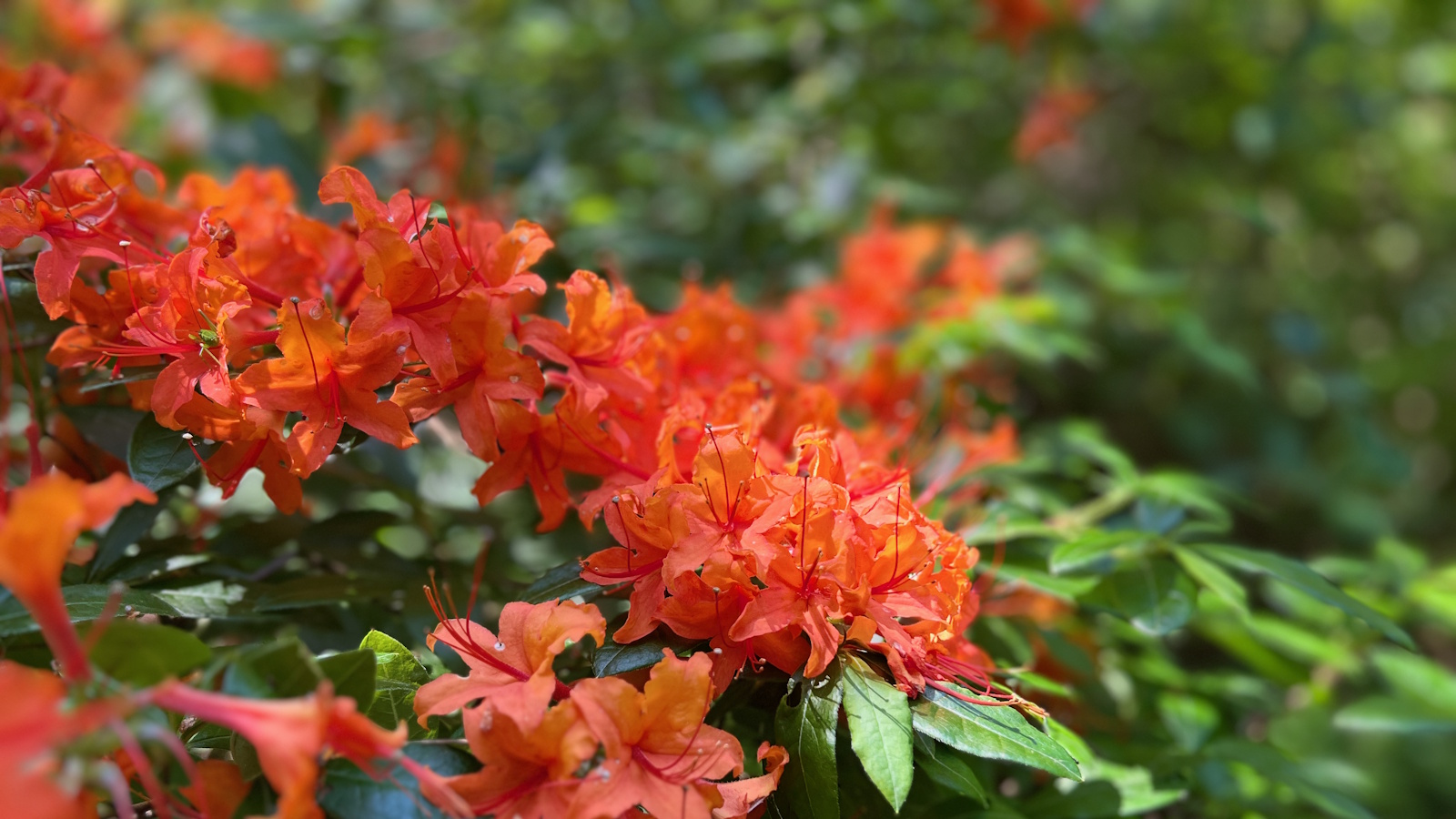 How to revive old rhododendron plants – pruning advice from a professional gardener to save your struggling shrubs
How to revive old rhododendron plants – pruning advice from a professional gardener to save your struggling shrubsWith the right pruning approach, you can rejuvenate old and woody rhododendrons
By Thomas Rutter Published
-
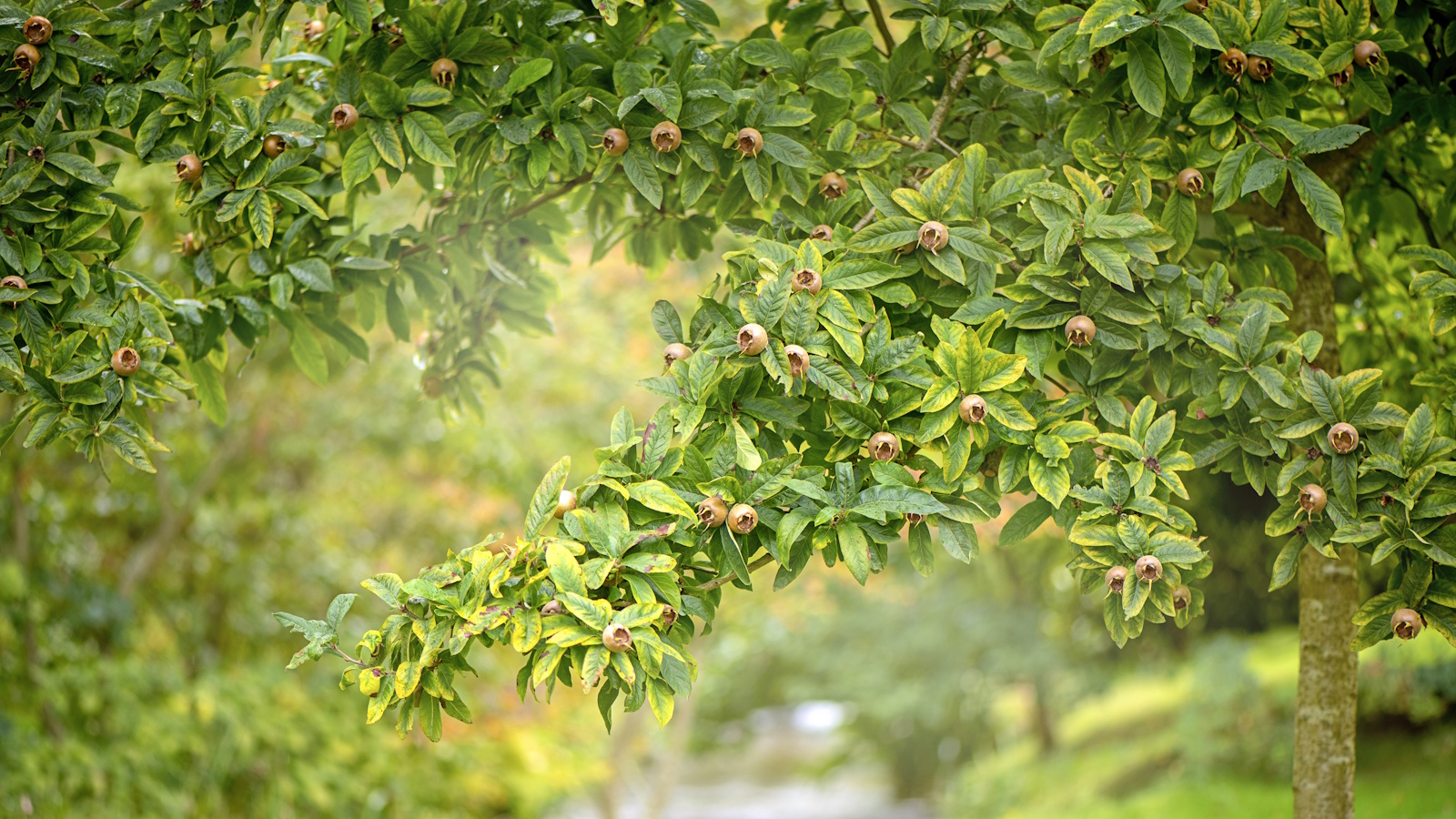 How to grow medlar trees – to enjoy a harvest of unusual fruits from this forgotten heritage species
How to grow medlar trees – to enjoy a harvest of unusual fruits from this forgotten heritage speciesMedlar fruits were once a popular delicacy, yet today, they are a rare find
By Thomas Rutter Published